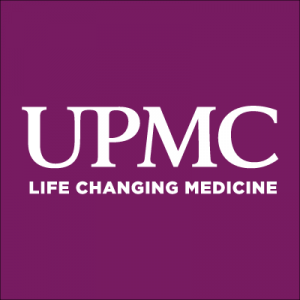Job Summary
The Nurse Coordinator, Structural Heart functions on the multidisciplinary team as an advocate, interpreter, and educator for patients and significant others. Responsible for ensuring all patients who are navigated receive quality and comprehensive services. Coordinates patient care throughout the continuum in collaboration with the multidisciplinary team. Serves as a liaison throughout the facility and in the community regarding services provided for this unique patient population. Serves as a single point of contact for referring physicians, patients, and caregivers to provide resources and assistance with accessing clinical and supportive care services offered within Independence Health System and the community. Participates in data analytics as it relates to utilization, quality, satisfaction and outcomes. This position provides advance practice nursing care across the continuum of care services related to patients that present with valvular disease that may require a broad spectrum of advanced surgical or interventional treatment and services. This position may be involved in pre-hospital workup, patient and professional educational programs and patient follow-up. Emphasis is on the team approach. The roles of the Structural Heart Nurse Coordinator will evolve over time to meet the needs of the patients and of the advanced valvular disease cardiovascular team.
Essential Job Functions
- Coordinates and facilitates the multidisciplinary team of providers and staff who care for patients in both the clinic and hospital setting.
- Demonstrates the knowledge, skill and coordination to provide nursing care and guidance to patients from point of contact through recovery
- Systematically and continually performs the functions of assessing, planning, implementing, and evaluating the care of patients
- Maintains professional and technical knowledge by attending education workshops; reviewing professional publications; establishing personal networks; participating in professional societies.
- Assures quality of care by adhering to therapeutic standards; measuring health outcomes against patient care goals and standards; making or recommending necessary adjustments; following system/hospital and nursing division's philosophies and standards of care set by state board of nursing, state nurse practice act, and other governing agency regulations.
- Protects patients and employees by adhering to infection-control policies and protocols, medication administration and storage procedures, and controlled substance regulations.
- Documents patient care services by charting in patient and department records.
- Maintains continuity among nursing teams by documenting and communicating actions, irregularities, and continuing needs using Nurse Knowledge Exchange techniques.
- Maintains patient confidence and protects operations by keeping information confidential.
- Implements standard work, clinical protocols and patient care pathways.
- Ensures safe and effective transitions of care that help to promote positive health care outcomes for Independence Health System patients.
- Functions as preceptor for new hires.
- Assesses, plans, implements coordinates, and monitors and evaluates options for patients, their families, caregivers and the health care team, including providers, to promote effective care coordination outcomes.
- Manages transitions of care effectively as one of the critical components to reducing readmissions and poor health outcomes. Provides crisis management for clients; makes linkages for interventions as appropriate.
- Initiates care coordination strategies that are evidence-based and outcome focused.
- Implements standard work, clinical protocols and patient care pathways.
- Identifies patient care requirements by establishing personal rapport with potential and actual patients, and other persons in a position to understand care requirements.
- Establishes a compassionate environment by providing emotional, psychological, and spiritual support to patients, friends, and families.
- Promotes patient's independence by establishing patient care goals; teaching patient/family to understand condition, medications, and self-care skills; answering questions.
- Maintains safe and clean working environment by complying with procedures, rules and regulations; calling for assistance from health care support personnel.
- Demonstrates competencies of clinical reasoning and critical-thinking skills for managing complex and high-risk patients while simultaneously assuming the patient advocate role to ensure conflict-free, unbiased and culturally competent care.
- Assures care coordination that takes into account patients' values, needs, preferences and their choice to self-direct care.
- Puts the patient at the center of all care decisions and is an essential driver to ensuring that patients get the right care, in the right setting, at the right time.
- Effectively manages transitions involving comprehensive planning, targeted outreach and the timely transfer of information between parties critical to the transition. Manages transitions of care effectively as one of the critical components to reducing re-admissions and poor health outcomes.
- Facilitates the flow of care to expedite appropriate discharge and prevent readmissions.
- Assumes the leadership role in achieving outcomes and making the health system work for the patient.
- Brings access, understanding and knowledge of the community and the resources to support management of chronic illness.
- Resolves patient problems and needs by utilizing multidisciplinary team strategies.
- Maintains a cooperative relationship among health care teams by communicating information; responding to requests; building rapport; participating in team continuous quality improvement and problem-solving methods.
- Contributes to team effort by accomplishing related results as needed.
- Implements effective care coordination strategies that are evidence-based and outcome focused.
- Seeks role as chair, co-chair, and lead for CQI projects or shared governance, council, committees or work groups.
Specialty Job Functions
- Coordinates the referral, screening, additional patient testing requirements, consult appointments and hospital-based procedures. Facilitates communication with cardiovascular surgeons and cardiologists, including referring physicians regarding patient eligibility and clinical status.
- Serves as a point of contact to all patients from diagnosis, treatment and recovery period.
- In acute care environment, collaborates with the nursing staff and educators, case managers and outpatient services to ensure prompt movement of patients along the continuum of care. Provides professional education to clinical team members in the advanced techniques and care of patients receiving specialized interventions.
- Facilitates the progression of the valve procedure patient and assist with preparing the patient and family. Provides follow-up care per pre-determined clinic intervals, documents patient status and communicates ongoing patient condition to physicians during follow-up care.
- Collaborates with an interdisciplinary cardiovascular health care team in planning, implementing and evaluation ongoing care programs and education for the patients, families, care givers and community.
- Presents detailed patient level data and coordinates case presentations for multidisciplinary case conferences.
- Works closely with vendors involved in the day-to-day management and product selection for this patient population.
- Program development and ongoing program maintenance for program to meet ever-changing business climate of Independence Health System in conjunction with physicians and program director, development may include but is not limited to:
- clinical care forms
- patient flow charts
- patient and physician professional communication tools
- clinical care protocols
- patient data tracking methodology
- program goals and outcomes reporting
- Provide community physician outreach and education using nursing experience and networking in conjunction with physician leadership to build referral program within Independence Health System’s expanding markets.
- Development and review of all policies and procedures affecting the valvular program. Follows regulatory requirements, adheres to National Patient Safety goals and complies with facility policy, protocols and procedures
- Other related duties as assigned.
Required Qualifications
- Graduate of an accredited Nursing Program required.
- Bachelor’s Degree (BSN) or Master’s Degree (MSN) in Nursing required.
- Three (3) years’ experience in cardiology, cardiac catherization or electrophysiology.
- Strong leadership ability, independent thinking and decision-making ability; analytical problem solving skills, sound judgment; excellent oral and written communication skills, must be able to function in a team environment.
- Strong time management and organizational skills; ability to work independently and in a team setting; is able to multi-task and prioritize assignments and demonstrate excellent problem solving skills; creativity, and ability to transition smoothly to various settings including inpatient, skilled nursing, physician office and outpatient clinics; flexibility in scheduling.
- Proficient in Microsoft Office applications, including Outlook and Excel.
Preferred Qualifications
- Master’s Degree in Nursing or related field (Health Administration, Business, Public Health, Management).
- Working knowledge of databases and registries.
- Three (3) years clinical experience in CT Surgery.
- RN Case management or care navigation experience within past five years.
- Experience in the care of Structural Heart patients or working in a Structural Heart program preferred.
- Knowledge of Payer/Insurance Benefits.
License, Certification & Clearances
- Current licensure to practice as a Registered Nurse in the State of Pennsylvania required.
- Current Basic Life Support (BLS) approved curriculum of the American Heart Association (CPR and AED) program required.
- Nursing Specialty Certification within 2 years of eligibility or hire.
- Act 34-PA Criminal Record Check from the PA State Police system
Supervisory Responsibilities
- This position has no direct supervisory responsibilities, but may serve as a coach and mentor for other positions in the department.
Position Type/Expected Hours of Work
- Incumbents will be scheduled based on operational need (rotate shifts, standby, on-call, etc.).
- Travel may be expected locally between Independence Health locations.
Equal Employment Opportunity
Independence Health and its affiliated companies are Equal Opportunity Employers. It is their policy to prohibit discrimination of any type and to afford equal employment opportunities to employees and applicants without regard to race, color, religion, sex, sexual orientation, national origin, age, marital status, disability, veteran status, or genetic information, or any other classification protected by law. Independence Health and its affiliated companies will comply with all applicable laws and regulations.
Disclaimer
This job description is not designed to contain a comprehensive listing of all activities, duties or responsibilities that are required of the employee. Moreover, duties, responsibilities and activities may change, or new ones may be assigned at any time with or without notice.
Work Environment
Effective March 2020 or during pandemic: goggles, face shield and mask are required according to CDC guidelines
|
When lift requirement is in excess of 50#, lift assistance (2 person) and/or transfer device is required.
Essential – Absolute Necessity.
Marginal – Minimal Necessity.
Constantly – 5.5 to 8 hours or more or 200 reps/shift.
Frequently – 2.5 to 5.5 hours or more or 32-200 reps/shift.
Occasionally – 0.25 to 2.5 hours or 2-32 reps/shift.
Rarely – Less than 0.25 hours or less than 2 reps/shift.
|
Physical Condition
|
Essential
|
Marginal
|
Constantly
|
Frequently
|
Occasionally
|
Rarely
|
Never
|
|
Extreme Heat
|
|
|
|
|
|
|
X
|
|
Extreme Cold
|
|
|
|
|
|
|
X
|
|
Heights
|
|
|
|
|
|
|
X
|
|
Confined Spaces
|
|
|
|
|
|
|
X
|
|
Extreme Noise(>85dB)
|
|
|
|
|
|
|
X
|
|
Mechanical Hazards
|
|
|
|
|
|
|
X
|
|
Use of Vibrating Tools
|
|
|
|
|
|
|
X
|
|
Operates Vehicle
|
|
|
|
|
|
|
X
|
|
Operates Heavy Equipment
|
|
|
|
|
|
|
X
|
|
Use of Lifting/Transfer Devices
|
|
|
|
|
|
|
X
|
|
Rotates All Shifts
|
|
x
|
|
|
|
X
|
|
|
8 Hours Shifts
|
x
|
|
X
|
|
|
|
|
|
10-12 Hours Shifts
|
x
|
|
|
X
|
|
|
|
|
On-Call
|
x
|
|
|
X
|
|
|
|
|
Overtime(+8/hrs/shift; 40/hrs/wk)
|
x
|
|
|
X
|
|
|
|
|
Travel Between Sites
|
|
x
|
|
|
X
|
|
|
|
Direct Patient Care
|
x
|
|
X
|
|
|
|
|
|
Respirator Protective Equipment
|
|
|
|
|
|
|
x
|
|
Eye Protection
|
|
x
|
|
|
|
X
|
|
|
Head Protection (hard hat)
|
|
|
|
|
|
|
X
|
|
Hearing Protection
|
|
|
|
|
|
|
X
|
|
Hand Protection
|
|
|
|
|
|
|
X
|
|
Feet, Toe Protection
|
|
|
|
|
|
|
X
|
|
Body Protection
|
|
|
|
|
|
|
X
|
|
Latex Exposure
|
|
|
|
|
|
|
X
|
|
Solvent Exposure
|
|
|
|
|
|
|
X
|
|
Paint (direct use) Exposure
|
|
|
|
|
|
|
X
|
|
Dust (sanding) Exposure
|
|
|
|
|
|
|
X
|
|
Ethylene Oxide Exposure
|
|
|
|
|
|
|
X
|
|
Cytotoxic (Chemo) Exposure
|
|
|
|
|
|
|
X
|
|
Blood/Body Fluid Exposure
|
x
|
|
|
X
|
|
|
|
|
Chemicals (direct use) Exposure
|
|
|
|
|
|
|
X
|
|
Mist Exposure
|
|
|
|
|
|
|
X
|
|
Wax Stripper (direct use)
|
|
|
|
|
|
|
X
|
|
Non-Ionizing Radiation Exposure
|
|
|
|
|
|
|
X
|
|
Ionizing Radiation Exposure
|
|
|
|
|
|
|
X
|
|
Laser Exposure
|
|
|
|
|
|
|
X
|
Physical Demands
|
When lift requirement is in excess of 50#, lift assistance (2 person) and/or transfer device is required.
Essential – Absolute Necessity.
Marginal – Minimal Necessity.
Constantly – 5.5 to 8 hours or more or 200 reps/shift.
Frequently – 2.5 to 5.5 hours or more or 32-200 reps/shift.
Occasionally – 0.25 to 2.5 hours or 2-32 reps/shift.
Rarely – Less than 0.25 hours or less than 2 reps/shift.
|
Physical Condition
|
Essential
|
Marginal
|
Constantly
|
Frequently
|
Occasionally
|
Rarely
|
Never
|
|
Bending (Stooping)
|
X
|
|
|
|
|
|
|
|
Sitting
|
X
|
|
|
|
|
|
|
|
Walking
|
x
|
|
|
|
|
|
|
|
Climbing Stairs
|
|
|
|
|
X
|
|
|
|
Climbing Ladders
|
|
|
|
|
X
|
|
|
|
Standing
|
X
|
|
|
|
|
|
|
|
Kneeling
|
X
|
|
|
|
|
|
|
|
Squatting (Crouching)
|
X
|
|
|
|
|
|
|
|
Twisting/Turning
|
|
|
|
|
X
|
|
|
|
Keyboard/Computer Operation
|
x
|
|
|
|
|
|
|
|
Gross Grasp
|
|
|
|
X
|
|
|
|
|
Fine Finger Manipulation
|
|
|
|
X
|
|
|
|
|
Hand/Arm Coordination
|
|
|
|
X
|
|
|
|
|
Pushing/Pulling(lbs. of force)
|
|
|
|
X
|
|
|
|
|
Carry
|
|
|
|
X
|
|
|
|
|
Transfer/Push/Pull Patients
|
|
|
|
|
|
X
|
|
|
Seeing Near w/Acuity
|
X
|
|
|
X
|
|
|
|
|
Feeling (Sensation)
|
|
|
|
|
X
|
|
|
|
Color Vision
|
x
|
|
|
|
|
|
|
|
Hearing Clearly
|
X
|
|
|
|
|
|
|
|
Pulling/Pushing Objects Overhead
|
|
|
|
|
X
|
|
|
|
Reaching Above Shoulder Level
|
|
|
|
|
X
|
|
|
|
Reaching Forward
|
|
|
|
|
X
|
|
|
|
Lifting Floor to Knuckle
|
|
|
|
|
X
|
|
|
|
Lifting Seat Pan to Knuckle
|
|
|
|
|
X
|
|
|
|
Lifting Knuckle to Shoulder
|
|
|
|
|
X
|
|
|
|
Lifting Shoulder to Overhead
|
|
|
|
|
X
|
|
|
When lift requirement is in excess of 50#, lift assistance (2 person) and/or transfer device is required









